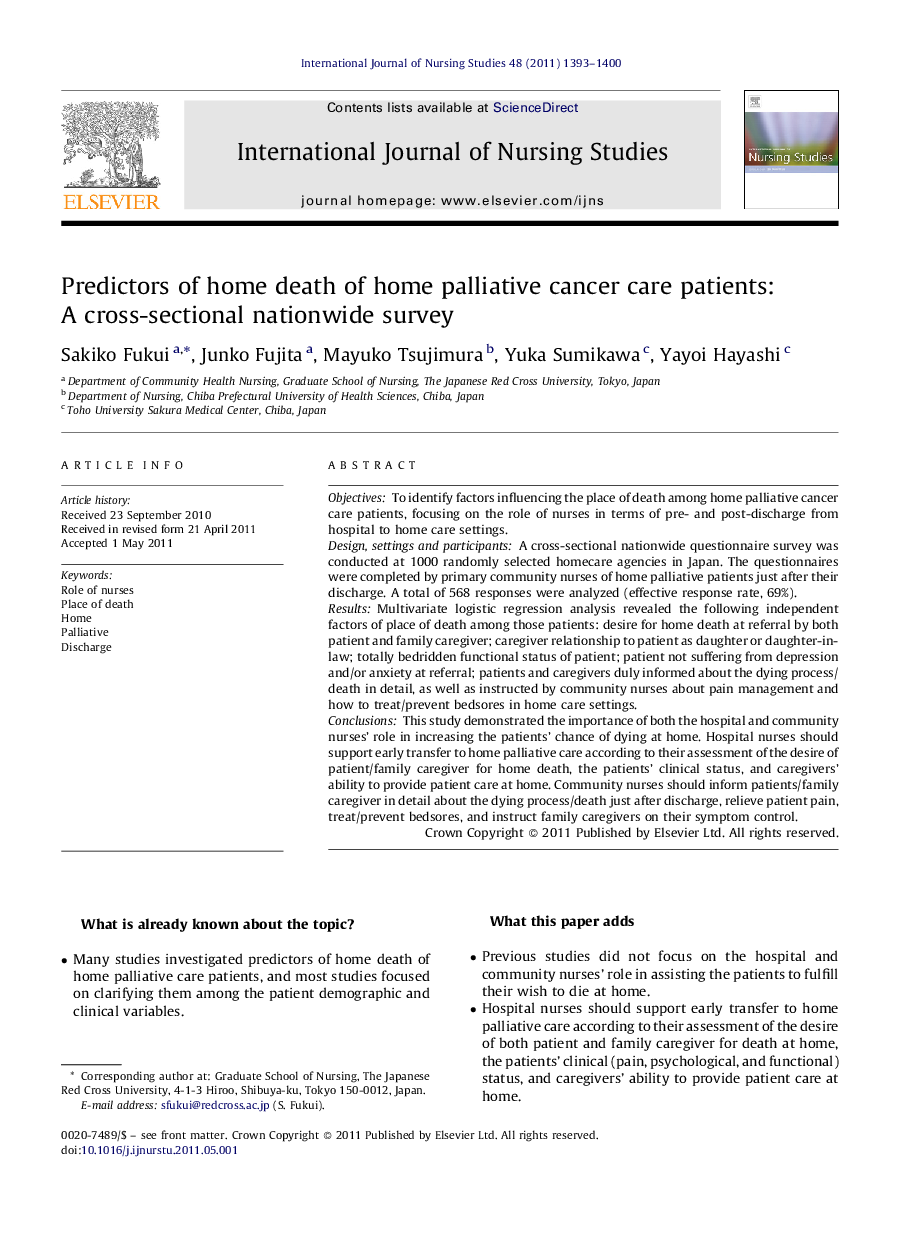| Article ID | Journal | Published Year | Pages | File Type |
|---|---|---|---|---|
| 1076863 | International Journal of Nursing Studies | 2011 | 8 Pages |
ObjectivesTo identify factors influencing the place of death among home palliative cancer care patients, focusing on the role of nurses in terms of pre- and post-discharge from hospital to home care settings.Design, settings and participantsA cross-sectional nationwide questionnaire survey was conducted at 1000 randomly selected homecare agencies in Japan. The questionnaires were completed by primary community nurses of home palliative patients just after their discharge. A total of 568 responses were analyzed (effective response rate, 69%).ResultsMultivariate logistic regression analysis revealed the following independent factors of place of death among those patients: desire for home death at referral by both patient and family caregiver; caregiver relationship to patient as daughter or daughter-in-law; totally bedridden functional status of patient; patient not suffering from depression and/or anxiety at referral; patients and caregivers duly informed about the dying process/death in detail, as well as instructed by community nurses about pain management and how to treat/prevent bedsores in home care settings.ConclusionsThis study demonstrated the importance of both the hospital and community nurses’ role in increasing the patients’ chance of dying at home. Hospital nurses should support early transfer to home palliative care according to their assessment of the desire of patient/family caregiver for home death, the patients’ clinical status, and caregivers’ ability to provide patient care at home. Community nurses should inform patients/family caregiver in detail about the dying process/death just after discharge, relieve patient pain, treat/prevent bedsores, and instruct family caregivers on their symptom control.
